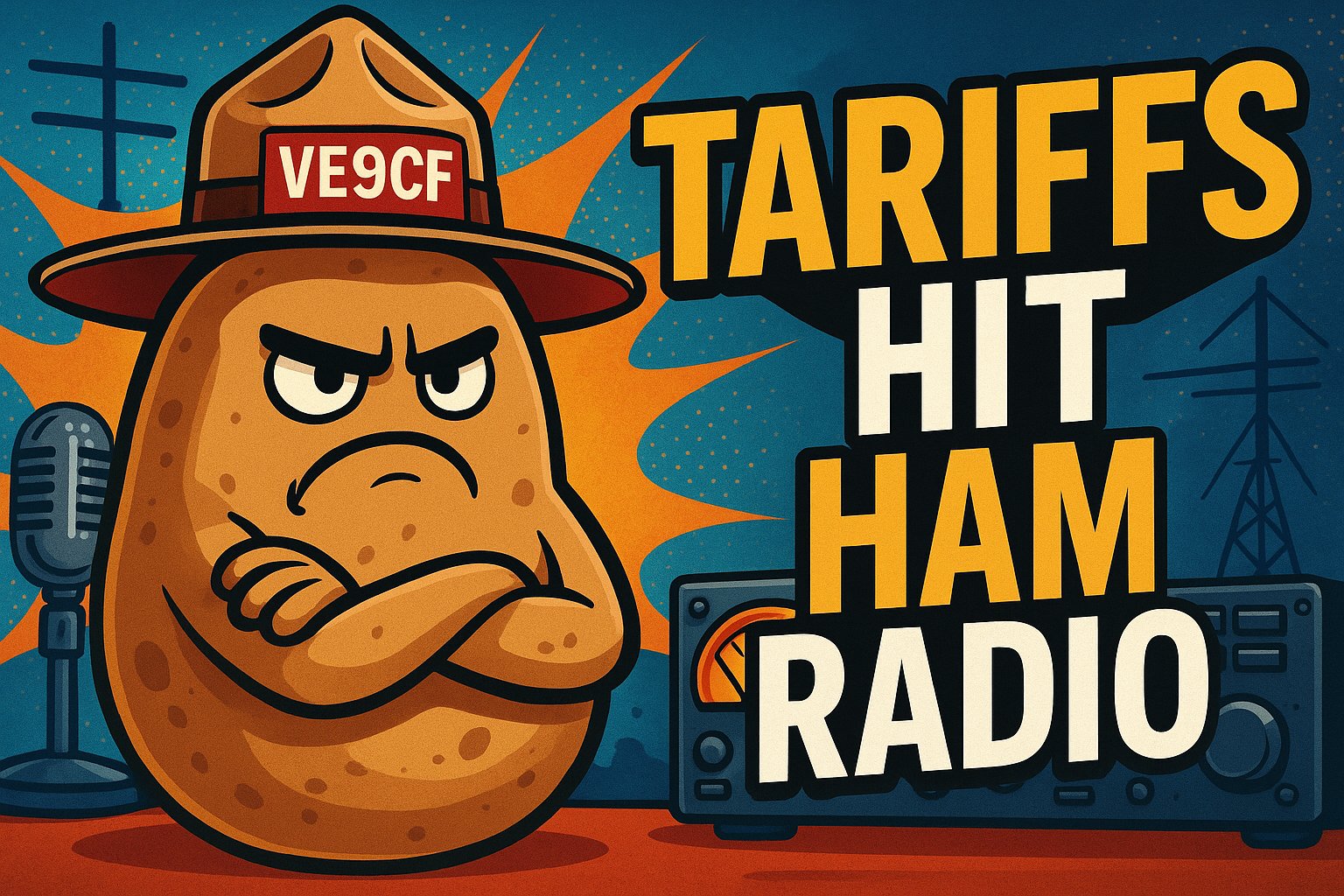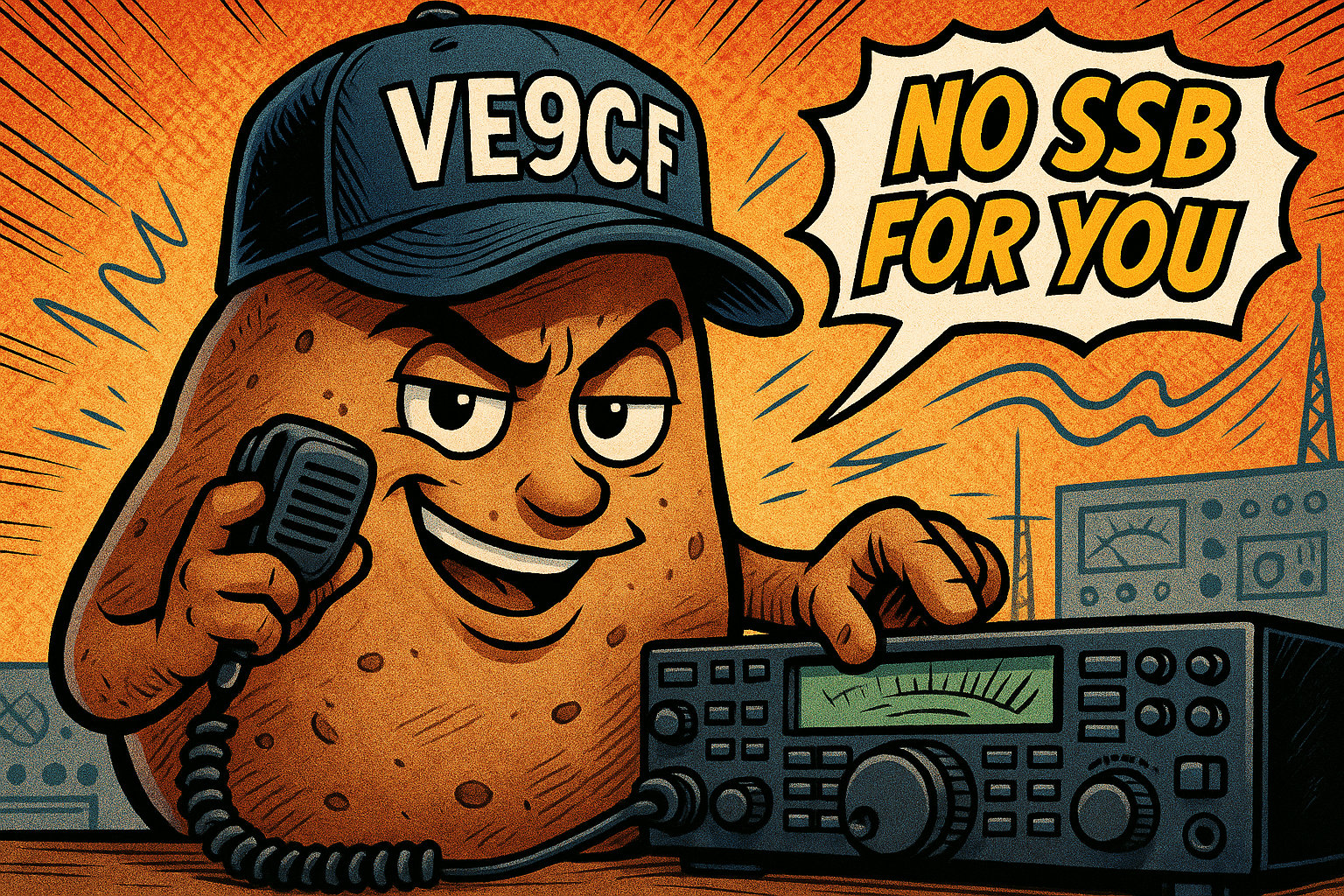Does Your Local Amateur Radio Club Suck?
In the world of amateur radio, the vitality and effectiveness of clubs are crucial for nurturing a community of enthusiasts. However, not all clubs succeed in creating an inviting atmosphere or embracing innovation, leading to frustrations among members. The reluctance to implement new technologies and a rigid leadership structure can stifle the enthusiasm of newer, especially younger, radio amateurs. These dynamics often discourage participation and innovation, causing potential and existing members to seek alternatives to traditional club involvement.
As radio amateurs, addressing these challenges head-on and advocating for positive changes is essential. Clubs should consider reevaluating their organizational approaches and openness to new ideas. It's necessary to foster a more inclusive environment that encourages the active participation of all members and integrates cutting-edge technologies to stay abreast of the times. By breaking free from the constraints of outdated practices, amateur radio clubs can rejuvenate their appeal and re-engage the ham community.
Key Takeaways
- Many amateur radio clubs struggle with fostering a welcoming and innovative environment.
- A shift towards inclusivity and adopting new technologies is crucial for club revitalization.
- Engaging and flexible club structures can encourage broader participation and sustain the community's interest.
Current Challenges of Amateur Radio Organizations
In this video, I address a pressing issue that impacts many amateur radio associations worldwide. Numerous clubs responsible for celebrating and promoting ham radio are facing significant challenges when it comes to attracting and retaining members. To put it bluntly, these issues are pushing interested individuals away, including those who, like myself, have decades of experience in ham radio.
These are the observations I've made:
- Leadership Style: Most of these groups are managed in an authoritarian rather than collaborative, democratic manner. Rather than involving all members, a select few tend to dominate decision-making and activities.
- Innovation Stagnation: These clubs often resist adopting new technologies. When ideas such as internet gateways or digital modes like EchoLink, FT4, and FT8 are proposed, they tend to be dismissed by the more established members, even if they could benefit the group.
- Engagement: Newcomers, especially the younger enthusiasts, are dissuaded from joining due to an unwelcoming atmosphere. When they do contribute ideas, they might be disregarded or not discussed, leaving them feeling underappreciated and often discouraged from participating.
- Structure and Activities: There's a noticeable lack of subcommittees and groups for various interests within these clubs. Unlike the vibrant model demonstrated by an Australian club with its tech talks, social gatherings, and active special interest groups, clubs tend to have limited structured interaction beyond the occasional meetups and obligatory business meetings.
To give a personal standpoint, I am disinclined to affiliate with local clubs that do not provide the sense of community or the platform for innovation I seek. However, I support national organizations that advocate for ham radio at broader levels, like providing education and federal representation.
Despite these experiences, I enjoy amateur radio independently, whether through portable on-the-air activations or engaging in contests and DXing. For those feeling similarly disenchanted, creating a new club or community might be worthwhile, particularly if you have a passion for a specific aspect of ham radio, like DX.
Guiding Amateur Radio Clubs Toward Success
Amateur radio clubs often grapple with engaging and retaining members. When attempting to foster a more vibrant community, you may notice some distinct managerial styles that could either hinder or enhance club dynamics.
Centralized Control:
- Common in many clubs
- A few individuals may oversee most activities
- This can lead to a stifling atmosphere for new, especially young, members
Democratic Participation:
- Encourages member involvement in decision-making
- Subcommittees handle different areas of operations
- Engenders a sense of ownership and collaboration among members
Technological Stagnation vs. Innovation:
- A hesitance to embrace new technologies can alienate those who seek progress
- Adopting tools like internet gateways and modern digital modes can revitalize club activities
Meeting Structure:
- Traditional formal meetings might not serve current needs
- Shifting to less formal, more collaborative gatherings can boost engagement
Special Interest Groups and Social Events:
- Lunches, dinners, technical discussions, and other casual meetups
- Fosters a community vibe and caters to various interests
Remember, the key to a thriving amateur radio club lies in inclusivity, open-mindedness, and a willingness to evolve. Should your club's environment feel stifling, contemplate ways to foster change or establish a new group with like-minded enthusiasts. Engaging with communities that share your interest in specific aspects of amateur radio, like DX, may also open up new avenues for collaboration and enjoyment of the hobby.
Challenges Encountered by New Enthusiasts
Engagement and Club Dynamics
- Centralized Leadership: Often, clubs display a top-down approach in decision-making. The autocratic style can lead to members feeling disengaged.
- Lack of Inclusivity: Newcomers, particularly those younger, might feel alienated by established members who resist change.
Innovation and Technology
- Resistance to New Technologies: Clubs frequently hesitate to embrace digital modes and internet-based solutions, which limits their growth.
- Unaddressed Suggestions: Ideas contributed by members occasionally get overlooked in meetings, causing frustration among innovative thinkers.
Communication and Meetings
- Ineffective Meetings: Regular meetings can be excessively formal and devoid of substantial outcomes, discouraging attendance.
- Suboptimal Information Exchange: The current meeting structures may not foster productive conversations or idea sharing among members.
Membership and Value Perception
- Perceived Lack of Value: If membership benefits don't resonate, members may not find a reason to continue their affiliation with the club.
- Operational Issues: Practical problems, such as malfunctioning equipment or inaccessible resources, can diminish a club's perceived value.
Stagnation in Technological Advancements and Member Engagement in Ham Radio Clubs
Why do most ham radio clubs struggle to thrive? Being part of the amateur radio community for thirty years offers a unique perspective on this issue—it's clear that a common factor is the lack of fresh initiatives and involvement. Take note that there are always exceptions, yet these are my observations.
When you join a club, you might notice that the leadership often leans towards authoritarian rather than inclusive decision-making. In clubs that excel, everyone is involved; there are teams for different activities, allowing for diverse participation—not just a few individuals monopolizing decisions. This inclusivity breeds vitality.
Within the typical club, the same few individuals bear the brunt of all tasks, inadvertently creating a stagnant environment. Innovation is essential, particularly in adopting new technologies that could rejuvenate interest and participation. Yet, these are frequently resisted by those accustomed to 'the way things have always been done.'
Key Issues:
- Monopolized Leadership: Too often, clubs are led by a small group that is resistant to change, which can be off-putting for potential new and younger members.
- Resistance to New Technologies: Even when beneficial modern capabilities like EchoLink, FT4, and FT8 emerge, they're not leveraged due to the preference for traditional methods.
- Neglect of New Ideas: Suggestions for improvement or innovation may be dismissed or forgotten, leading to frustration among those eager to contribute.
A shift is imperative for the clubs to evolve. Consider the success of groups that engage in regular skill exchanges, social meals, and varied interest groups—these are thriving hubs of activity. Such dynamism could replace the rigid structure that defines many clubs, where the only interaction may be an obligatory monthly meeting.
To keep the fire of amateur radio alive, minimizing formalities and fostering environments where new interests and technologies are welcomed is essential. For those disillusioned with the current state, it could be worthwhile to consider branching out or even starting a specialized club where shared interests like DX can be collectively explored.
Personal Experiences and Obstacles in Club Engagement
As an amateur radio enthusiast with three decades under my belt, I've noticed a trend that deeply concerns me. You might resonate with this if you've observed the current state of many ham radio clubs—an organizational structure that often stifles rather than encourages participation. I'm determined to address the elephant in the room: many clubs are not living up to their potential. Let's touch on the hierarchical approach that seems to pervade these spaces, where just a handful of individuals wield the majority of control.
My Key Observations:
- Controlled Leadership: Often, clubs are helmed more like dictatorships than as collaborative democracies.
- Lack of Inclusivity: Newcomers, particularly the younger generation, may face criticism, which can discourage their active involvement.
- Resistance to Change: There's a hesitancy to adopt innovative technologies that could revolutionize our practices, with excuses hinging on tradition.
It's concerning when valuable ideas are overlooked or forgotten, especially those that secure a place on meeting agendas. It pushes people like me, not lacking in idea generation but certainly in patience, to pursue our passion independently, detached from the club's politics or inertia. This sentiment of disengagement isn't just about wanting to do things my way; it's about recognizing that our vibrancy as radio amateurs comes from advancements and shared experiences, not the status quo.
On the national level, my support remains vital for organizations that advocate for our interests and provide educational resources. Locally, though, the return on involvement is wanting. For instance, much-needed technological updates for effective communication within the club are neglected, creating barriers rather than bridges.
Effective Club Characteristics:
- Diverse Leadership: Incorporation of subcommittees for diverse tasks and interests.
- Engagement Over Formality: Clubs thrive through informal tech talks and social gatherings rather than rigid, formal meetings.
- Innovation and Adaptation: Embracing new technologies and methodologies to remain contemporary and attractive to all ages.
To foster a space where new and seasoned hams feel valued and excited, we need to embrace change, nurture an inclusive culture, and adopt novel methods that reflect the dynamism of our hobby. Are your experiences similar, or does your club break the mold? Your perspectives on rejuvenating club life would be insightful. I'm especially keen to hear from those who've found a balance between tradition and innovation.
I'll end with a thought: If the club environment isn't conducive to growth or satisfaction, consider taking the initiative. Start a group centered on shared interests like DXing or experimenting with new club models. Collaboration could be the key to revitalizing the amateur radio club experience.
Remember, feedback is invaluable—I look forward to learning about your takes on club dynamics. Let's strive for a community where every member's voice contributes to the collective crescendo of our passion for ham radio.
Involvement in National Organizations
You might be wondering about the effectiveness of national entities in supporting amateur radio enthusiasts. If you resonate with concerns over the governance of local radio clubs and seek alternatives to enrich your experience in the hobby, listen closely. National organizations hold significant weight in advocating for ham radio interests at higher levels of government. Involvement with these groups often includes educational initiatives, promotion of the craft, and providing a broad spectrum of resources to hobbyists like you.
Consider the benefits of aligning with a national association:
- Advocacy: They represent your interests, pushing for legislative changes when necessary.
- Education: They offer training and development opportunities that might be absent from smaller, local clubs.
- Resources: Gain access to a plethora of information and assistance unavailable in local forums.
National organizations can be a valuable refuge if local club participation has left you dissatisfied, perhaps due to a lack of innovation or an unwelcoming atmosphere stifling new ideas. Whether it's outdated technology, unaddressed proposals, or ineffective meetings that concern you, you're not alone in your frustration. The support and resources these national entities offer might provide a more fruitful avenue for your ham radio pursuits.
Should you decide to forego local club involvement, remember that your interest alone sustains your engagement in amateur radio activities. You can activate from parks or dive into contests and DX adventuring without club affiliations. Moreover, if you're driven to inspire change or seek a group with a shared focus, such as a specialized DX club, never hesitate to reach out to like-minded individuals. Initiating a new group could lead to the camaraderie and innovation you seek.
Lastly, if you’re keen on making a difference but find resistance within your club, consider volunteering with committees or organizations that value your input. Your proactive involvement could catalyze change, nurturing a more dynamic and inclusive amateur radio community.
Different Approaches to Engaging in Ham Radio
If you're disenchanted with the conventional amateur radio club experience, consider alternative methods to enhance your engagement with the hobby. Below are several strategies that don't require club membership.
- Embrace Individual Projects: Focus on personal endeavors such as Parks on the Air (POTA) activations or independently pursue contesting and long-distance communication (DXing).
- Support National Bodies: Without joining local groups, contribute to larger organizations that advocate for ham radio at higher government levels and offer educational resources.
- Digital Networking: Utilize internet gateways like EchoLink to connect with other enthusiasts globally.
- Start a Special Interest Group: If you're interested in specific aspects of ham radio, initiate a local or regional group tailored to that interest, such as DX or new technologies.
- Community Involvement: Opt to volunteer for committees or events in the ham radio sphere where your ideas and efforts can have a direct impact, bypassing traditional club structures.
- Connect Informally: Set up informal gatherings or tech talks that encourage open discussions and knowledge sharing among ham radio operators without the formality of club meetings.
The key is to engage in ways that maximize your enjoyment of the hobby and respect your desire for innovation and collaboration.
Boosting Club Engagement
To enhance the engagement and satisfaction of members in amateur radio clubs, consider these actionable strategies.
Inclusive Leadership:
- Shift away from a centralized leadership model.
- Encourage the formation of subcommittees.
- Allocate various program responsibilities across more members.
Welcoming Newcomers:
- Avoid alienating new and younger members.
- Implement mentorship programs for new hams.
Innovation Adoption:
- Stay current with emerging technologies.
- Integrate systems like internet gateways and digital modes (e.g., EchoLink, FT4, FT8).
Streamlined Meetings:
- Opt for less formal, more frequent discussions.
- Replace monthly business meetings with hands-on activities and problem-solving sessions.
Community Building:
- Host regular social events (e.g., tech talks and group lunches).
- Create special interest groups catering to diverse hobbies within the ham community.
Open Dialogue:
- Ensure that all ideas are heard and considered.
- Establish platforms for members to contribute suggestions and receive feedback.
Strengthening Amateur Radio Clubs
Amateur radio, often seen as a hobby that brings together enthusiasts from all walks of life, entails more than just a pastime. It's a community where friendships are forged, knowledge is exchanged, and innovative technologies are embraced. Amateur radio clubs must break outdated traditions and shy away from a one-person rule. Let's consider the true potential of vibrant, tech-savvy clubs that foster inclusion, collaboration, and modernization within the ham radio world.
- Embrace Innovation: It is crucial to incorporate new technologies like internet gateways, EchoLink, FT4, and FT8. These advancements can revitalize your engagement with the hobby and attract new, enthusiastic members.
- Encourage Democratic Participation: Moving beyond a dictatorial model, your club should promote a democratic environment where every member, irrespective of age, has an equal say in the club's operations.
- Form Special Interest Groups: Establish subcommittees focusing on different aspects of ham radio. Whether technology, contests, or DX-ing, these groups can provide structured growth and foster a shared sense of purpose.
- Engage in Regular Informal Gatherings: To facilitate open discussions among members, replace overly formal meetings with casual tech-to-tech talks, lunch meetups, or evening social hours.
- Retain and Attract Youthful Members: Create an inviting space for younger hams by showing respect for their ideas and providing mentorship rather than sticking to the "it's always been done this way" attitude.
- Optimize Club Operations: Consider streamlining meetings and activities to focus on initiatives that add real value to your membership rather than sticking to procedural formalities.
- Volunteer and Showcase Leadership: If the status quo doesn't align with your vision, lead or volunteer in committees. Alternatively, start a new group aligned with your interests, like a local DX club, and invite like-minded individuals to join you.
Let's work together to enhance our clubs, making them places to share frequencies, ideas, innovation, and camaraderie. Engage in the conversation—share your thoughts and strategies to make our ham radio community more dynamic and welcoming. It's in our hands to lead the change and ensure our clubs survive and thrive, offering a beacon of community and technology combined.
Concluding Reflections
Many ham radio clubs face a pressing issue that resonates with new and seasoned enthusiasts. A lack of vitality within these clubs often stems from a rigid leadership style. This approach leans more toward autocracy than a cooperative democracy. It stifles the innovation and engagement critical to a thriving community.
Clubs also fail to leverage modern technology effectively. Reluctance to adopt tools like internet gateways, EchoLink, and digital modes like FT4 and FT8 is symptomatic of resistance to change. This deters newcomers eager to explore amateur radio's cutting edge.
Moreover, the social fabric of these clubs is often frayed. When you bring fresh ideas, they may be dismissed or forgotten, leaving you disillusioned. This discouragement is the opposite of what a community should foster, especially when considering the potential benefits that your ideas might bring.
The essence of amateur radio lies in communication, experimentation, and shared knowledge. Therefore, clubs must nurture a more inclusive and less formal environment, embracing various interests and expertise. Subcommittees and special interest groups can vitalize a club by uplifting a sense of ownership and purpose among all members.
While some clubs excel in creating active, inclusive, and adaptive environments, others could revisit their approach to ensure they serve the community effectively. Your participation in these clubs is an opportunity to invoke change. But remember that there's also the potential to create new avenues for collaboration should existing structures prove too resistant.
As radio amateurs, we must support one another through national organizations or local collaborations. The power of the ham radio community lies in its collective spirit and the willingness to harness that energy toward progression and innovation. If you’re passionate about amateur radio and have ideas that can reform the local clubs, don’t hesitate to voice them or even lead the way in establishing new forums for engagement.






